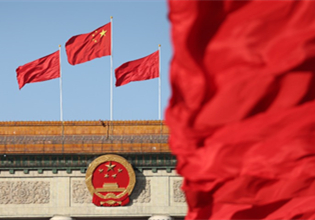Inner Mongolia's agriculture sector performs solidly in Q1
In the first quarter, the agricultural sector in North China's Inner Mongolia autonomous region turned in a solid performance, laying a solid foundation for rural production for the year.
Projections are that in the current year, the total amount of crops in Inner Mongolia is expected to cover 136 million mu (9.07 million hectares), an increase of 900,000 mu compared with the same period last year.
The cultivated area of grain is estimated at 109 million mu, an increase of 1.23 million mu on 2020.
To date, 4.77 million mu of grain has been sown. Of this, 2.27 million mu of wheat has been planted, with 4.53 million mu of corn and 225,000 mu of potato being cultivated.
Meanwhile, Inner Mongolia's agricultural resources allocations and transportation reserves are reported to be in a stable condition. The supply of goods throughout the autonomous region is deemed to be sufficient, with distribution channels functioning well.
The seed storage facilities for major grain crops such as corn is currently at 96.9 percent of projected demand for the spring sowing season, which is higher than the same period last year.
Chemical fertilizer storage has reached 1.06 million metric tons and pesticide storage is at 2,639 tons – accounting for more than 60 percent of the expected spring planting demand.
Additionally, agricultural machinery and technological services have been prepared well.
It is understood that over 1.02 million tractors and more than 1.5 million sets of agricultural machinery can be put into production in Inner Mongolia. In addition, some 43,000 farm mechanics and repairmen have been trained to meet the demands of the spring sowing season.



 Print
Print Mail
Mail





